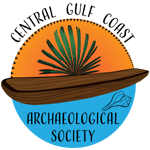Thursday, September 16, 2021
The Ancient Mound-Builders of Tomoka: Ecology, Migration, and Ritual
Jon Endonino, Ph.D, Eastern Kentucky University
Dr. Endonino will present excavation and analyses results from Phase 2 of the Tomoka Archaeology project where ecological data was collected in order to determine the environmental conditions that existed when Mount Taylor hunter-gathers settled and constructed the mounds, earth- and shell-works, and the attending rituals during the Thornhill Lake phase (5600-4700 cal BP). Environmental data are combined with radiocarbon dates and analyses of artifacts in order to situate mound-building in time and in relation to other people across Florida and beyond.
Jon has been engaged in archaeological research for over two decades in Florida and elsewhere in the Southeastern United States. Among his long-standing research interests are the social and ecological conditions associated with mortuary monumentality among Mount Taylor groups in the St. Johns River Valley (SJRV) and along the Atlantic coast of northeast Florida. Additionally, Jon researches regional social interactions, notably the exchange of stone tools and lithic raw materials between groups inhabiting chert-bearing regions in the interior uplands of peninsular Florida and those inhabiting the stone-deprived SJRV and Atlantic coast.
Recently Jon has initiated the Tomoka Archaeology Project (TAP), a program of site mapping at testing at the Tomoka Mound and Midden Complex along the Atlantic coast of northeast Florida. Additional ongoing research includes the characterization of lithic source areas throughout peninsular Florida, the modeling of the organization of lithic technology in stone-deprived landscapes such as the SJRV, and experimental archaeology programs designed to investigate issues related to the manufacture and use of fiber-tempered pottery and the function of Expanded Base Microliths.
Thursday,April 15, 2021
Florida’s Forgotten City: The Archaeology of the Lost City of St. Joseph
Christopher Hunt, Ph.D. Candidate, Department of Anthropology, University of South Florida
Situated along the banks of St. Joseph’s Bay in northwest Florida, the antebellum city of St. Joseph played a foundational role in Florida’s early political and economic history. Unfortunately, little is known about its inhabitants or why this important coastal city never recovered after the 1840 yellow fever epidemic and subsequent hurricane. Only after the turn of the 20th century was this area resettled into what is today modern Port. St. Joe. Through archaeological excavation and archival research, a new narrative is forming around the once lost city of St. Joseph.
Christopher Hunt is an archaeologist with over ten years of experience in the private and public sectors. Chris is currently focusing on the antebellum history of Florida through his dissertation research at the lost city of St. Joseph in Northwest Florida. As a Graduate Fellow at the University of South Florida’s Institute for the Advanced Study of Culture and the Environment, Chris is interested in understanding the role culture plays at the intersection of human resilience and critical environmental changes. He hopes that through our understanding of the past, we can better prepare for future challenges. Chris’s research and professional experience also include cultural resource management, geospatial analysis, bioarchaeology, remote sensing, political economy, and archaeological landscapes.
TAMPA BAY ARCHAEOLOGY
Thursday, February 18th at 7 pm
Two winners of the 2019 Alliance for Weedon Island Archaeological Research and Education (AWIARE) and Levett Foundation Grant, Kendal Jackson and Heather Draskovich, will discuss their winning research in the Tampa Bay area. Read their lecture abstracts and biographies.
Kendal Jackson, Ph.D. Candidate, USF
Searching for Ancient Seascapes: Preliminary Results of Ongoing Geoarchaeological Investigations in Tampa Bay Estuary
Abstract: Like all estuaries, Tampa Bay is an exceptionally dynamic environment where the encroaching sea has transformed once-terrestrial landscapes into littoral ecosystems conditioned by patterns in salinity, surf, and tide. This history of near-constant change makes it difficult for archaeologists to understand the character and distribution of the ancient habitats utilized and managed by ancestral Native American communities. However, estuaries are also places of deposition where accumulating sediments often preserve a record of past environmental transformations. My present research in Tampa Bay is focused on reconstructing the ancient landscapes and seascapes that encompassed and surrounded habitation sites. In this talk, I’ll discuss an ongoing program of vibration coring, percussion coring, and excavation centered at well-preserved Woodland-period (ca. 1000 BC – AD 1050) midden-mound sites in Upper Tampa Bay, Cockroach Bay, and Weedon Island Preserve. Preliminary results reveal complex histories of marine flooding, seascape development, and transformation that contextualize archaeological patterns and inspire novel hypotheses for interpreting ancient shellworks.
Kendal Jackson is a Ph.D. candidate in Applied Anthropology at the University of South Florida. His research focuses on paleoenvironment and how past societies have shaped the trajectory of long-term ecological processes. His dissertation research is focused on understanding the roles that ancestral Native American societies played in the establishment and transformation of nearshore estuarine ecosystems across the late-Holocene.
Heather Draskovich, M.A. Student, USF
Rethinking Settlement Patterns at the Weeden Island Site (8PI1)
Abstract: The Weeden Island site (8PI1), despite its importance as a Weeden Island period (AD 200-900) ceremonial center and type site for the ceramic series bearing its name, has largely remained poorly-dated. With a limited amount of dates available to archaeologists, yielded from an intensive focus on only small portions of the site, there has continued to be a lack of the temporal and spatial control needed to answer many of the big questions involving change at the Weeden Island site. Through the execution of shovel testing in previously uninvestigated areas of the site, as well as analysis of material from past excavations, new radiocarbon dates have been obtained to help build a better chronology of the site. This research models newly acquired radiocarbon dates with those from previous research to aid in further understanding of the settlement patterning and landscape use of the Weeden Island site.
Heather Draskovich is a master’s student in the Department of Anthropology at the University of South Florida. Her research focuses on landscape use on a site-level scale around Tampa Bay. Her master’s research centers around the pre-Columbian settlement patterning and use of the Weeden Island site.


